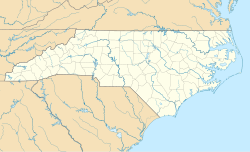Estey Hall
|
Estey Hall
|
|

Estey Hall
|
|
| Location | Raleigh, North Carolina |
|---|---|
| Coordinates | 35°46′16.9″N 78°38′14.03″W / 35.771361°N 78.6372306°WCoordinates: 35°46′16.9″N 78°38′14.03″W / 35.771361°N 78.6372306°W |
| Built | 1873 |
| Architect | G. S. H. Appleget |
| Architectural style | Italianate |
| NRHP Reference # | |
| Added to NRHP | May 25, 1973 |
Estey Hall is a historic building on the campus of Shaw University in Raleigh, North Carolina. It was the first building constructed for the higher education of African-American women in the United States. Built in 1873, Estey Hall is the oldest surviving building at Shaw, which is the oldest historically black college in the South and was the first institution of higher learning established for freedmen after the Civil War. The building, originally known as "Estey Seminary," was named in honor of Jacob Estey, the largest donor to the construction project. Estey Hall, located in the East Raleigh-South Park Historic District, was listed on the National Register of Historic Places in 1973 and is a Raleigh Historic Landmark.
Henry Martin Tupper, a Union Army chaplain and Baptist missionary, founded the school in 1865 for the education of former slaves. Students and faculty originally met in a hotel room due to the lack of funding for land and buildings. In 1870, the school received a donation from philanthropist Elijah J. Shaw, and with the money the school was able to purchase land near Fayetteville Street. The school was chartered in 1875 by the North Carolina General Assembly and given the official title of Shaw University. By educating young people, the school assisted in the rise of the black middle class that arose in late 19th century Raleigh. Shaw University educated many of the region's black politicians and business leaders, such as M.T. Pope.
...
Wikipedia


